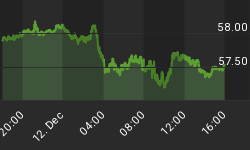The global pandemic ravaged the world’s economies across the board, diminishing standards of living and pushing millions into poverty. In the process, the world has seen its middle class shrink by tens of millions.
Prior to the emergence of COVID-19, some 1.38 billion people were expected to be counted in the global middle class in 2020, but that estimate was off. It failed to predict a pandemic.
A new Pew Research Center analysis finds that the pandemic pushed 54 million people from the global middle class into poverty, while the number of poor skyrocketed by another 131 million people.
That’s the first time since the 1990s that we’ve seen the middle class shrink.
The biggest declines in middle class status were in South Asia and East Asia.
If not for China, these numbers would have been far worse.
“The erosion in the middle class might have been deeper if not for the fact that China – which is home to more than one-third of the global middle class – evaded an economic contraction”, the Pew report said.
Prior to the pandemic, the last 10 years had seen a rapid growth in the middle class around the world. Some 435 million people were added to the middle-income tier during this period and nearly 300 million people entered the upper-middle income tier.
In 2020, while the global middle class shrunk by 54 million, the upper-middle-income tier shrunk by 36 million and the high-income tier by 62 million
"In modern history, it is hard to come up with examples where you see such a sharp downturn in global economic growth," analysis author Dr Rakesh Kochhar said.
And it may get worse, still, as emerging economies suffer from slower recoeries.
Last January, the World Bank forecasted that South Asia would experience a 4.3% increase in gross domestic product (GDP) per capita by the end of 2020. A year later, output in South Asia was estimated to have decreased by 7.8%
The World Bank estimates that the global economy contracted by 4.3% in 2020.
Meanwhile, the number of poor is estimated to have been 131 million higher because of the recession.
South Asia (most notably, India and Sub-Saharan Africa) accounted for most of the increase in poverty.
Nor has the United States been immune.
In the last six months of last year, nearly 8 million Americans have tumbled into poverty, with the U.S. Department of Health and Human Services determining that the poverty line for a family of four is $26,200.
According to joint research by three U.S. universities, the nation witnessed the biggest one-year poverty line increase in the 60 years, from 9.6% in June to 11.7% in November.
Among households making less than $35,000 a year, some 57% of Americans experienced income or employment loss during the pandemic.

















